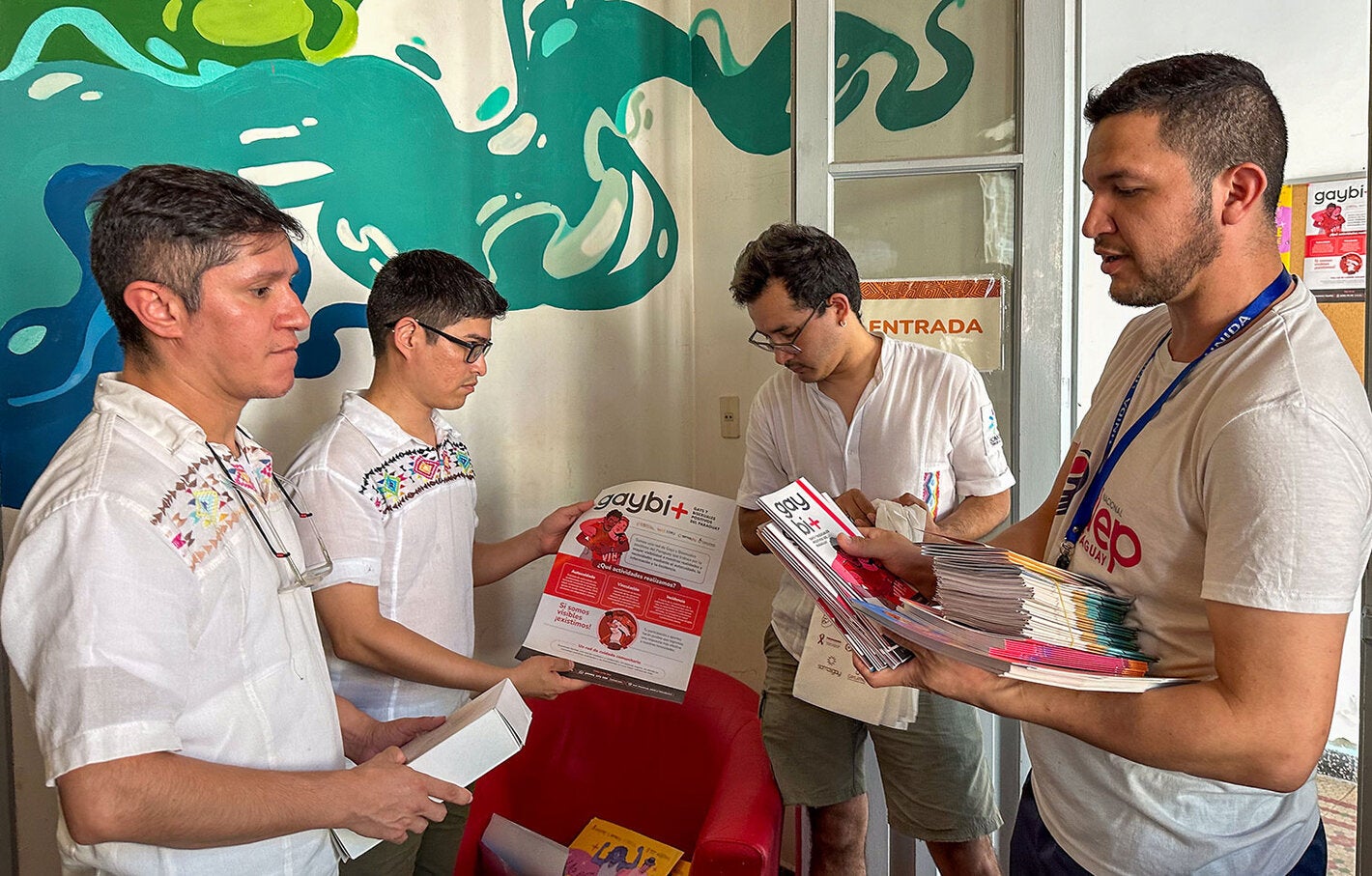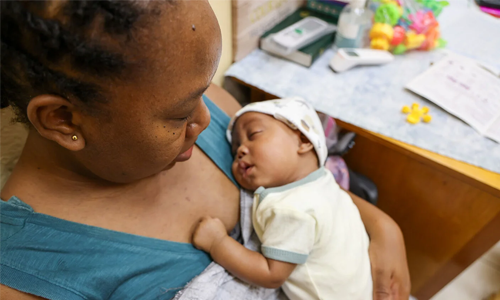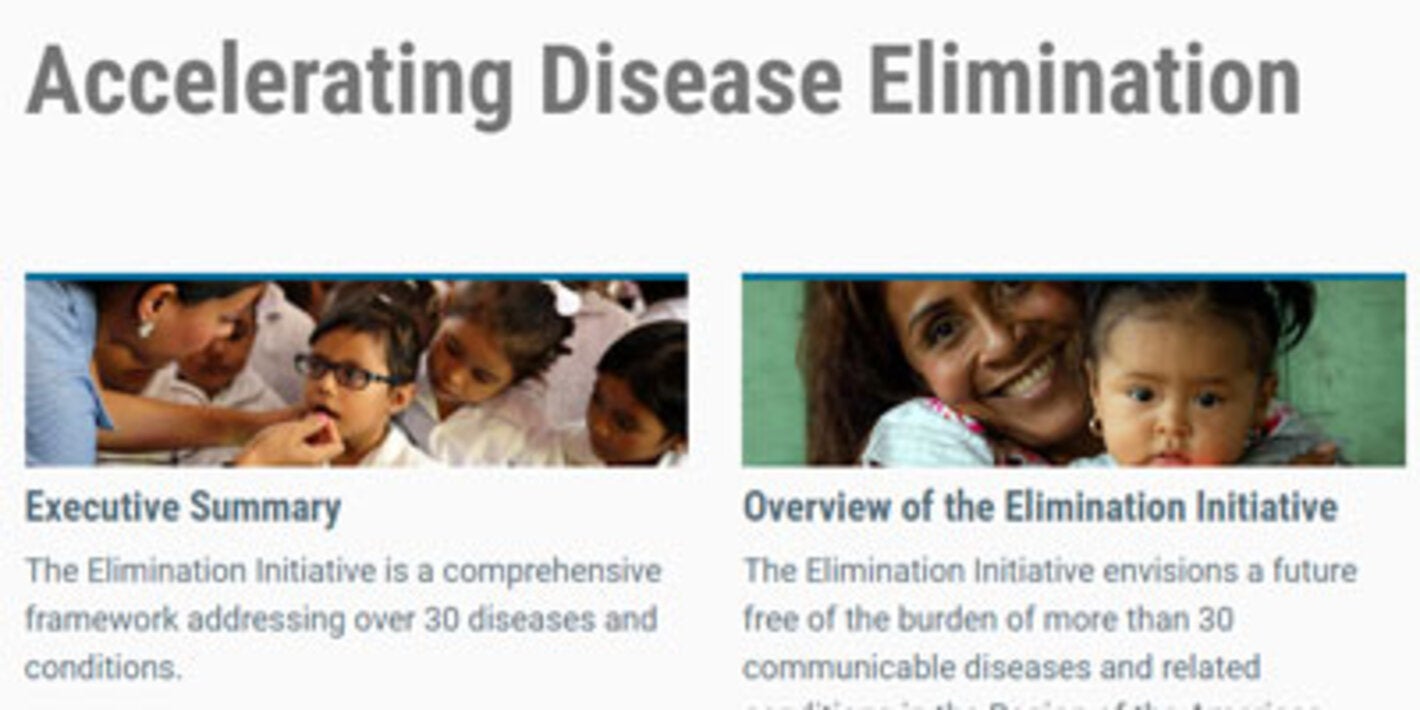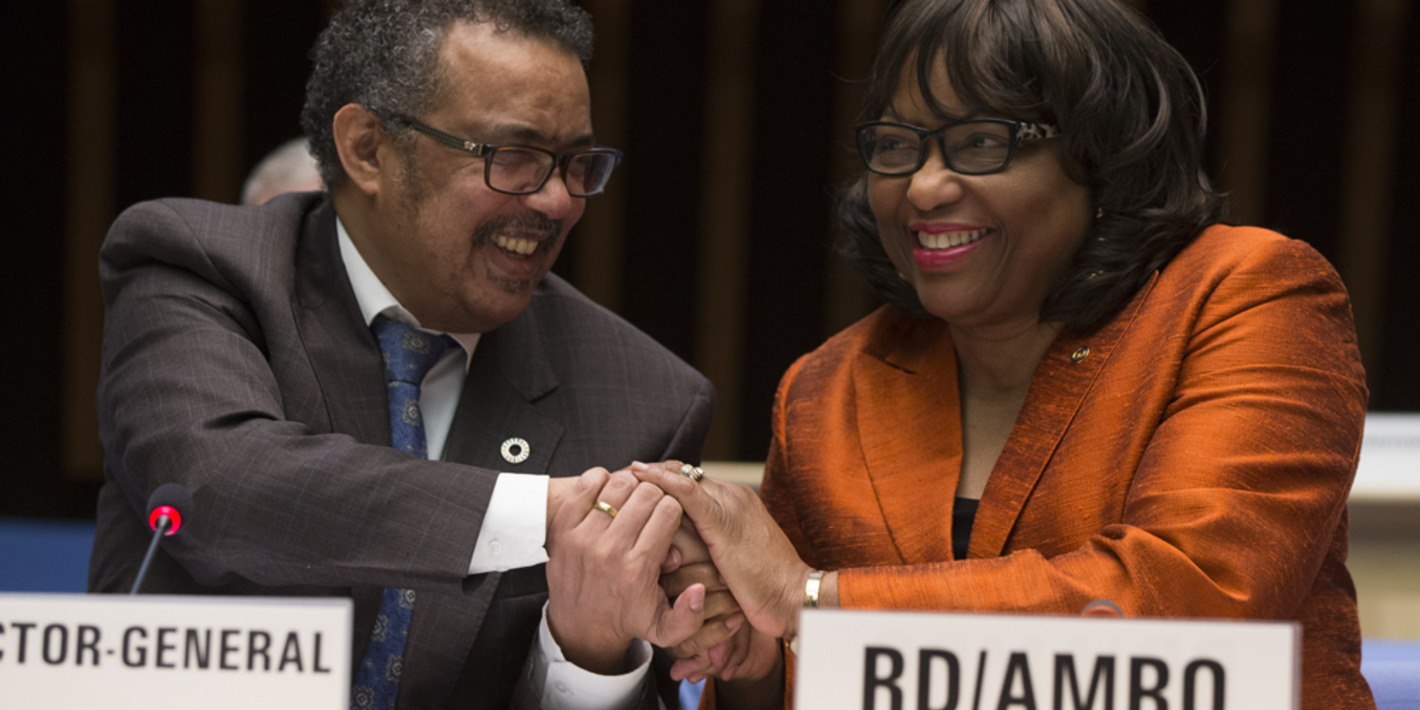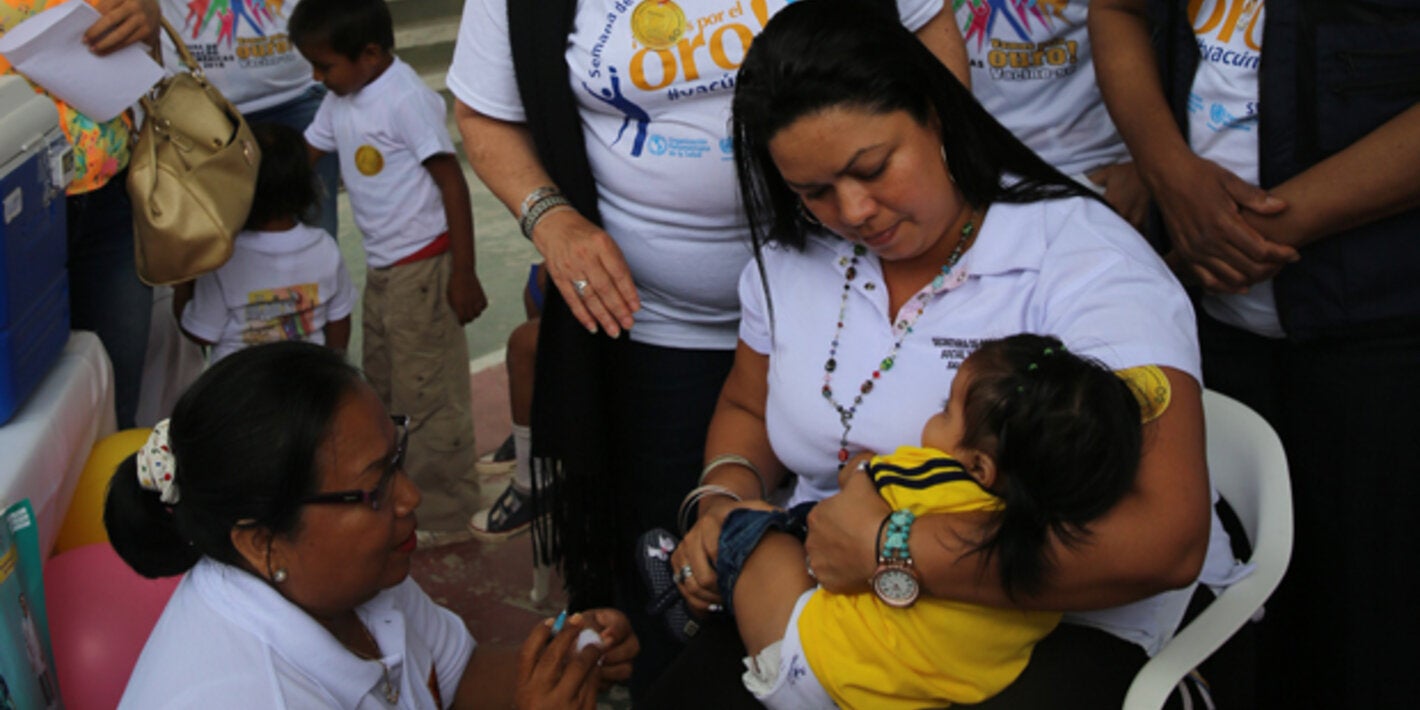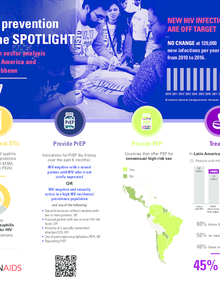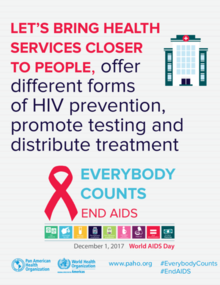SUBMENU
Since the beginning of the HIV epidemic, the Region of the Americas has contributed with a public health and human rights approach to the global response to HIV. Member States during the Seventy-Fifth World Health Assembly noted with appreciation the new Global Health Sector Strategies on, respectively, HIV, viral hepatitis and sexually transmitted infections for the period 2022-2030 (GHSS) and approved its implementation. These Strategies aim to promote an accelerated, focused, more effective, innovative and sustainable response, paving the way towards the goal of ending the epidemics of AIDS, STIs and viral hepatitis as public health problems in the Region of the Americas by 2030.
- The number of new HIV infections in Latin America is estimated to have increased 9% from 2010 to 2023, with approximately 120,000 new infections in 2023. The Caribbean had a reduction of 22% from 2010 to 2023, down from an estimated 19.000 new cases to 15.000 per year.
- The HIV epidemic in the Region disproportionally affects certain sub-population (key populations), including men who have sex with men (MSM) transgender women, and female sex workers. According to the latest estimates for 2021, in Latin America, these three key populations account for more than half of new infections, and in the Caribbean they account for almost half of new infections.
- In 2023, there were an estimated 4 milllion people with HIV in the Americas, of which approximately 2.7 million lived in Latin America and the Caribbean.
- In Latin America, the number of people dying of AIDS-related death has decreased from 42,000 in 2010 to 30,000 in 2023, while the Caribbean decreased from 12,000 to 5,100 in the same period.
- It is estimated that 12% of people with HIV in Latin America and in the Caribbean are unaware of their infection. Approximately one third are diagnosed late, with advanced immunodeficiency (under 200 CD4 per mm3 of blood).
- Approximately 1.7 million people living with HIV were receiving antiretroviral treatment (ART) in Latin America and 240,000 in the Caribbean by the end of 2023, accounting for 73% ART coverage all persons estimated to be living with HIV in Latin America and 70% in the Caribbean.
- You can find more information on HIV/AIDS at the following link.
The Human Immunodeficiency Virus (HIV) targets the immune system and weakens people's defense systems against infections and some types of cancer. As the virus destroys and impairs the function of immune cells, infected individuals gradually become immunodeficient. Immune function is typically measured by CD4 cell count.
Immunodeficiency results in increased susceptibility to a wide range of infections, cancers and other diseases that people with healthy immune systems can fight off. The most advanced stage of HIV infection is Acquired Immunodeficiency Syndrome (AIDS), which can take from 2 to 15 years to develop depending on the individual. AIDS is defined by the development of certain cancers, infections, or other severe clinical manifestations.
The symptoms of HIV vary depending on the stage of infection. Though people living with HIV tend to be most infectious in the first few months, many are unaware of their status until later stages. The first few weeks after initial infection, individuals may experience no symptoms or an influenza-like illness including fever, headache, rash, or sore throat.
As the infection progressively weakens the immune system, an individual can develop other signs and symptoms, such as swollen lymph nodes, weight loss, fever, diarrhea and cough. Without treatment, they could also develop severe illnesses such as tuberculosis, cryptococcal meningitis, severe bacterial infections and cancers such as lymphomas and Kaposi's sarcoma, among others.
HIV can be transmitted via the exchange of a variety of body fluids from infected individuals, such as blood, breast milk, semen and vaginal secretions. Individuals cannot become infected through ordinary day-to-day contact such as kissing, hugging, shaking hands, or sharing personal objects, food or water.
Behaviors and conditions that put individuals at greater risk of contracting HIV include:
- having unprotected anal or vaginal sex; • having another sexually transmitted infection such as syphilis, herpes, chlamydia, gonorrhea, and bacterial vaginosis;
- sharing contaminated needles, syringes and other injecting equipment and drug solutions when injecting drugs;
- receiving unsafe injections, blood transfusions, tissue transplantation, medical procedures that involve unsterile cutting or piercing; and
- experiencing accidental needle stick injuries, including among health workers.
Serological tests, such as rapid diagnostic tests (RDTs) or enzyme immunoassays (EIAs), detect the presence or absence of antibodies to HIV-1/2 and/or HIV p24 antigen. No single HIV test can provide an HIV-positive diagnosis. It is important that these tests are used in combination and in a specific order that has been validated and is based on HIV prevalence of the population being tested. HIV infection can be detected with great accuracy, using WHO prequalified tests within a validated approach.
It is important to note that serological tests detect antibodies produced by an individual as part of their immune system to fight off foreign pathogens, rather than direct detection of HIV itself. Most individuals develop antibodies to HIV within 21 days of infection, during the so-called window period. This early period of infection represents the time of greatest infectivity; however, HIV transmission can occur during all stages of the infection. No currently available serological or virological assay can detect any marker of HIV with less than 10 days of infection.
It is best practice to also retest all people initially diagnosed as HIV-positive before they enroll in care and/or treatment to rule out any potential testing or reporting error. Notably, once a person diagnosed with HIV and has started treatment they should not be retested.
Testing and diagnosis of HIV-exposed infants has been a challenge. For infants and children less than 18 months of age, serological testing is not sufficient to identify HIV infection – virological testing must be provided (at 6 weeks of age, or as early as birth) to detect the presence of the virus in infants born to mothers living with HIV.
However, new technologies are now available to perform the test at the point of care and enable return of the result on the same day to accelerate appropriate linkage and treatment initiation.
Individuals can reduce the risk of HIV infection by limiting exposure to risk factors. However, besides reducing risk-taking behaviors, the prevention of HIV and other STIs also depend on the level of vulnerability of individual and communities.
In the context of HIV/AIDS, prevention is a result the interaction of:
(i) personal aspects;
(ii) the quality and coverage of health services, including those aimed at prevention, care, social support and impact-alleviation; and
(iii) interpersonal, societal and environmental factors, including gender and social inequities across different contexts and cultures.
Antiretroviral therapy (ART) is treatment of people infected with human immunodeficiency virus (HIV) using anti-HIV drugs. The standard treatment consists of a combination of drugs (often called "highly active antiretroviral therapy" or HAART) that suppress HIV replication. The combination of drugs is used in order to increase potency and reduce the likelihood of the virus developing resistance. ART reduces mortality and morbidity rates among HIV-infected people, and improves their quality of life. The benefits of ART also include the prevention of HIV transmission by suppressing HIV replication in persons living with the virus. This benefit of ART is also defined as “undetectable equal untransmittable” , or U=U.
The 75th World Health Assembly endorsed the Global Health Sector Strategies on, respectively, HIV, viral hepatitis and sexually transmitted infections for the period 2022-2030 (GHSS). The strategies include five strategic directions that guide priority actions by countries and by WHO.
The strategic directions are:
- Deliver high-quality, evidence-based, people-centred services.
- Optimize systems, sectors and partnerships for impact.
- Generate and use data to drive decisions for action.
- Engage empowered communities and civil society.
- Foster innovations for impact.



